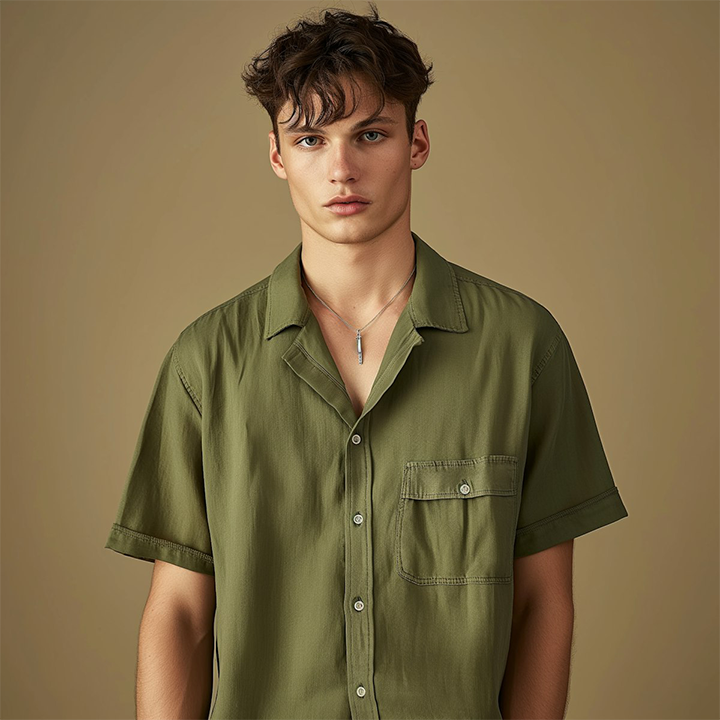
Layering Like a Pro: Styling Tips for Every Season
Layering is an art that can elevate any outfit, whether you’re dressing for the chilly winds of fall or the cool evenings of summer. Mastering the art of layering not only keeps you comfortable throughout the day but also allows you to play with textures, colors, and silhouettes to create stylish, multi-dimensional looks. Let’s dive into how you can layer like a pro and style your outfits for every season, from winter through to summer.
1. Layering for Winter: Stay Warm Without Compromising Style
When the temperatures drop, layering is your best friend. The key to winter layering is to focus on both warmth and comfort, without sacrificing your sense of style. Start with a moisture-wicking base layer like a fitted thermal shirt or a light wool sweater. These materials trap heat close to the skin, keeping you cozy while remaining breathable.
Over your base layer, opt for a medium-weight piece, like a cardigan, fleece, or a soft knit sweater. The middle layer is essential for insulation and provides a balanced mix of warmth without making you feel too bulky. On top, a stylish outerwear piece like a wool coat, puffer jacket, or a tailored trench coat is perfect for blocking the wind.
Complete the look with accessories such as scarves, hats, and gloves, which are not only functional but can also add a pop of color or texture to your outfit. When layering for winter, remember to balance proportions: if your coat is oversized, pair it with a more fitted sweater underneath to avoid looking too heavy.
2. Layering for Fall: Embrace the Transitional Season
Fall is the perfect time to experiment with layering because the weather tends to fluctuate. Mornings are crisp, but afternoons can still be warm. The goal is to stay comfortable in a range of temperatures, all while keeping your look chic and trendy.
Start with a lightweight long-sleeve shirt or blouse as your base. A fitted turtleneck or a breathable cotton top works well for fall. Add a stylish sweater or denim jacket as your second layer. Fall is all about cozy knitwear, so don't be afraid to play with textures such as chunky cardigans or slouchy pullovers.
For outer layers, try a lightweight trench coat, a leather jacket, or even a utility jacket that adds both warmth and style. The beauty of fall layering is the opportunity to experiment with different fabrics—denim, leather, and wool are great choices.
Finish off your fall ensemble with ankle boots, scarves, and hats. Fall is the season for earthy tones, so opt for deep oranges, browns, and rich greens to create a warm, autumnal look.
3. Layering for Spring: Light Layers for Transitional Weather
Spring layering can be tricky, as the weather can be unpredictable, often switching between sunny and chilly. The trick is to keep things light and breathable while still being prepared for the occasional drop in temperature.
Start with a soft, lightweight shirt or blouse as your base layer—something like a cotton or linen top is ideal. For your second layer, a cardigan or light pullover works wonders for the cool mornings, but can easily be removed when the sun comes out.
A perfect outer layer for spring is a stylish light jacket—think denim, bomber, or a spring trench coat. These are great for layering and can be paired with almost anything. Keep the colors soft and pastel to match the fresh vibe of spring.
In terms of accessories, opt for lighter scarves or shawls, and a comfortable pair of sneakers or loafers to keep things relaxed and breezy.
4. Layering for Summer: Light and Breezy Layers
Summer may seem like a time to ditch the layers altogether, but layering during this season is all about creating a cool, breezy look that helps you stay comfortable even when it gets hot. The key to summer layering is to go for lightweight fabrics and breathable materials.
Start with a sleeveless top, tank, or short-sleeve shirt as your base. Then, add a lightweight cardigan, kimono, or sheer shirt as your second layer. These pieces will protect you from the sun while still keeping you cool. Flowy fabrics like cotton, linen, or lightweight cotton-blends are perfect for summer.
For outer layers, opt for a lightweight, unlined blazer or an open-front vest. These pieces provide just enough coverage for the cooler evenings while allowing your skin to breathe in the heat.
Summer is also the perfect time to layer accessories. Pair a flowy dress with a stylish sunhat, or wear a light scarf that doubles as a beach cover-up. Comfortable sandals or sneakers will complete your summer layered look.
5. The Key to Successful Layering: Balance and Proportion
One of the most important things to keep in mind when layering is balance. Layering should never overwhelm your outfit, so it’s essential to choose pieces that complement each other both in terms of texture and fit. Play with proportions—if you’re wearing a long coat, pair it with a shorter sweater underneath. Similarly, if your layers are more fitted, such as a turtleneck and slim jeans, you can add a more voluminous outer layer like a loose jacket.
Layering allows you to express your personal style, stay comfortable, and adapt to changing weather conditions. The trick to mastering the art of layering is to choose versatile fabrics, play with textures and colors, and keep your look balanced. Whether it's the heavy layers of winter or the light layers of summer, layering can elevate your outfit, making it not only functional but fashionable too. So go ahead, experiment with different combinations and become a layering pro in every season!




